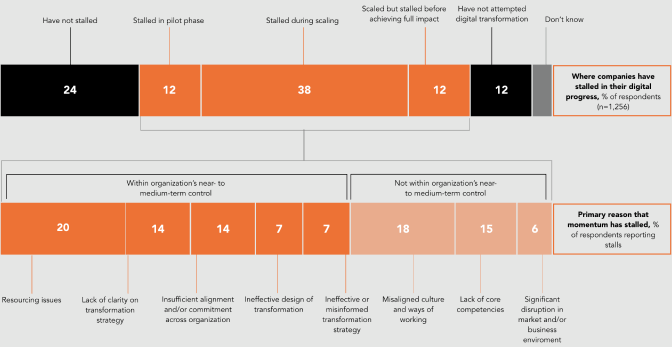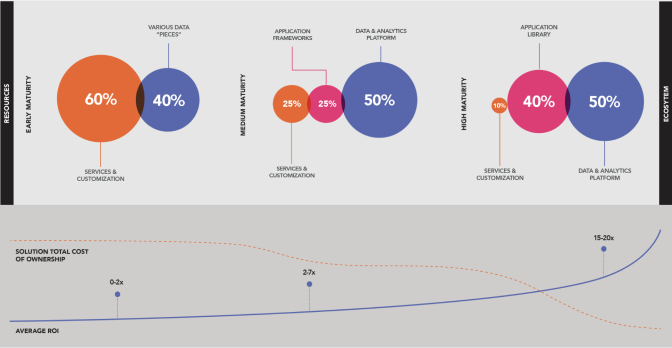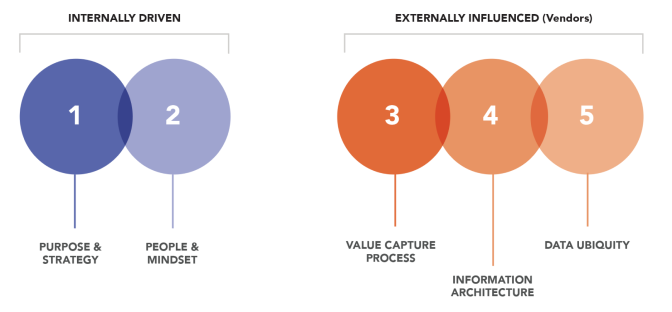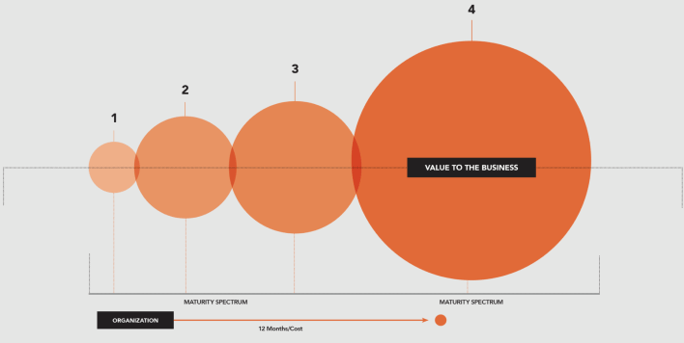Digital Maturity Is a Key Metric of Digital Success
Any organization that wants to adopt and enjoy the benefits of Industrial DataOps needs to consider the state of its digital maturity. It’s clear that outsized ROI from digital investments is more likely to come out of sustained innovation and long-term digital strategy, rather than just one or two quarters of focused effort. This doesn’t mean that deploying more use cases isn’t important and that short term-value isn’t possible, but rather that digital programs and operational momentum are difficult to get started and can fail quickly for many different reasons.
This is exactly why so many organizations are frustrated right now; they expected outsized short-term payoffs, not fully realizing the longer-term play. To be fair, the broader digital transformation market did overpromise the immediacy of value, but the solutions market remains accurate regarding the significant potential of advanced digital technologies. This is a classic case of “when,” not “if.”
Symptomatically, this disconnect manifests itself in terms of stalled digital transformations, as the evidence from McKinsey (Fig. 1) demonstrates compellingly.
Across industry, stalled progress happens most often during the scaling phase, with 62% of the root cause being factors that are within the organization’s near to medium-term control. Developing an operational proof of concept (POC) for example, has become much simpler in the last two to three years, while scaling still remains a challenge.
This points to a very important parallel, however: POCs are short-term projects while scaling is long(er)-term. What’s missing in this paradigm today is the lack of a proper people, process, and platform flywheel to carry and build digital momentum forward from phase to phase.
Outsized ROI from digital investments is more likely to come out of sustained innovation and long-term digital strategy, rather than just one or two quarters of focused effort.










